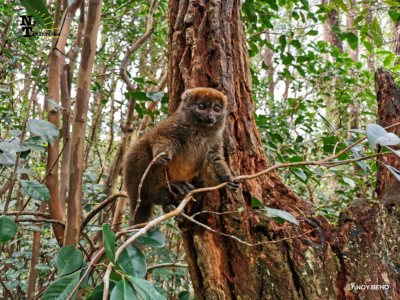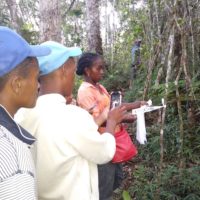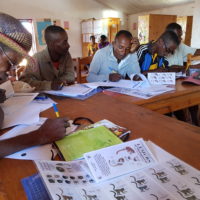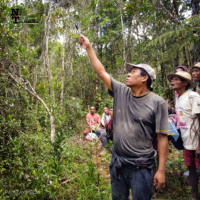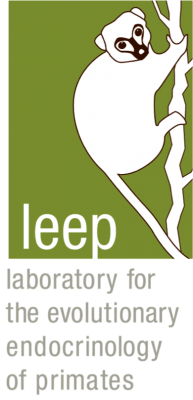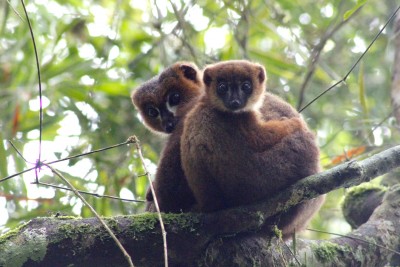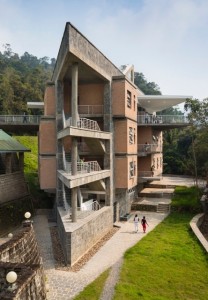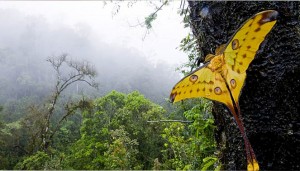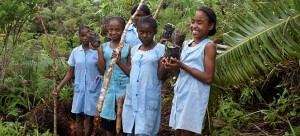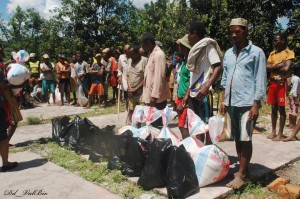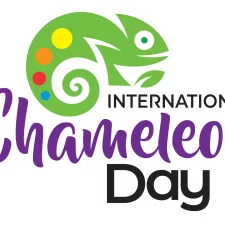Ny Tanintsika
 What We Do
What We Do
Ny Tanintsika works to empower communities to conserve lemurs through a multifaceted approach that builds local capacity, addresses livelihoods concerns and promotes stakeholder collaboration and communication.
Lemurs are crucial to Madagascar’s rich and thriving biodiversity. The decline in lemur populations and the rapid extinction of a number of species, due to habitat loss and hunting, is jeopardising this biodiversity.
Currently, a number of forest communities hunt and eat lemurs as a primary source of protein in their diet, or keep them as pets. Although protection legislation exists, it is not widely known, understood nor enforced. Habitat loss due to forest in-migration for ‘slash and burn’ agriculture, deforestation and logging is an equally crucial factor in this project.
How We Protect Lemurs And Other Wildlife
Whilst focusing on Golden Bamboo Lemur (Hapalemur aureus) species, we are gathering data on all primates in the previously unresearched forests of Ambohimahamasina and three neighbouring areas. Data collection on lemurs is conducted by local stakeholders, and forest inhabitants will become lemur monitors to ensure project sustainability.
Additionally, 12 signs encouraging lemur conservation are being erected along Ambohimahamasina’s 3 main forest footpaths crossing to the eastern side of the forest ‘corridor’.
What Lemur Species We Protect
We target lemur taxa that are categorized as being Critically Endangered, and in a listed action plan locality site (the COFAV). The Lemur Conservation Strategy lists the COFAV as being home to 21 lemur taxa of which 6 are critically endangered, 7 endangered, 4 vulnerable, 1 near threatened and 3 data deficient.
COFAV has the highest number of lemur species of any protected area in Madagascar – of which a disproportionate number are in elevated threat categories. However, scientific research on biodiversity has largely been limited to national parks.
Threatened Species Targeted:
- Golden Bamboo Lemur (Hapalemur aureus): Critically Endangered C2a(i)
Other threatened species benefitting from the project:
- Southern Ruffed Lemur (Varecia variegata ssp. editorum): Critically Endangered A2cd
- Milne-Edward’s Sifaka (Propithecus edwardsi): Endangered A2cd+3cd+4cd
- Gilbert’s Lesser Bamboo Lemur (Hapalemur griseus ssp. gilberti): Endangered B1ab(i,iii)
How We Support Local Communities
Support is being given to forest inhabitants to make their lifestyles more sustainable, which is beneficial to human communities and nature. Agricultural production on deforested land is boosted through training on improved techniques, with 6 community tree nurseries operational to provide saplings for agroforestry, reforestation and forest restoration to meet both human and lemur needs. Numerous awareness-raising initiatives are combined with promotion of alternative sources of income and protein, including small-scale fish-farming and chicken-rearing, and the capacity-building of Community Forest Management associations to reduce lemur poaching and habitat loss.

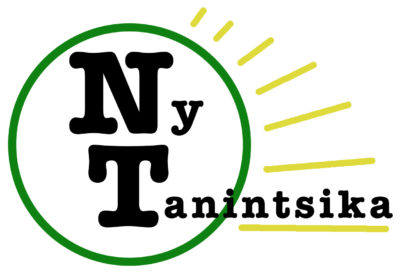
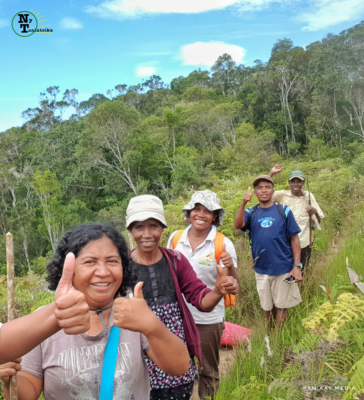 What We Do
What We Do